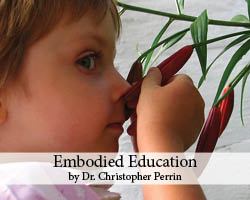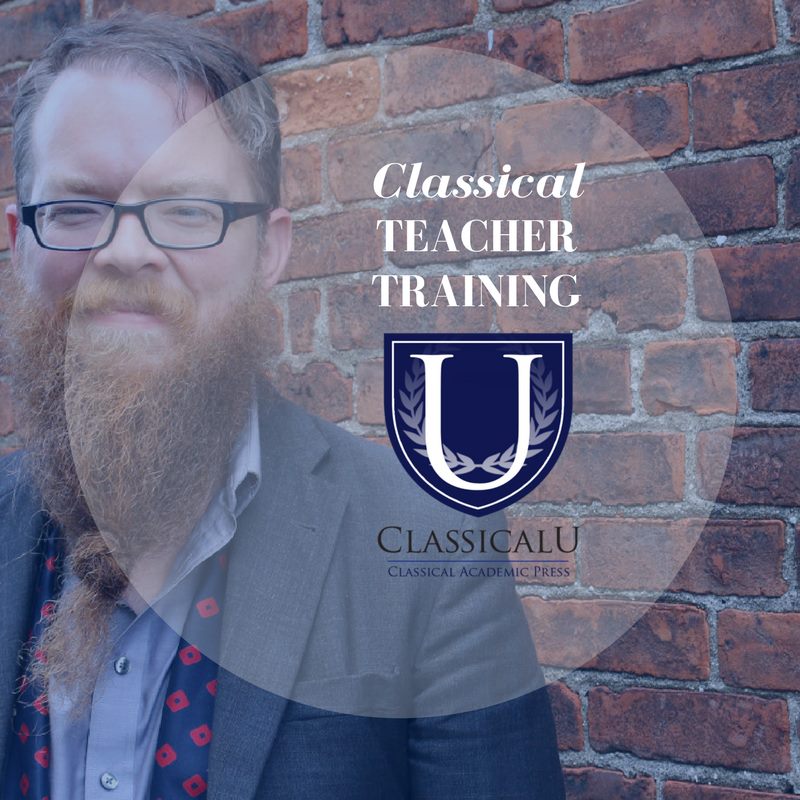
The Five-Sense Inventory: Seeking a Fully Embodied Education
As I consult with classical school and homeschool communities, I find myself talking more and more about our five senses. This is because many in the classical education renewal are rediscovering the importance of embodiment. Our educational ideals (such as wisdom, virtue, and eloquence) need to be seen, heard, smelled, tasted, and felt.
Please pardon this gross generalization: Since the Enlightenment, the life of intellect, learning, and education has become increasingly text centered. Now, I am a great advocate of texts, particularly the best texts, or the so-called great books. I think we should read much more of them and talk much more about them. I do think, however, that too much focus on texts makes for dull schools and dull students. Some will object. Should not the written word be central? Are we not under siege by all matter of inane video, images, and cacophony? Is not Christ called the Logos, elevating the “word” to the highest place?
Well, yes and no. The word and the text do deserve a privileged position, and yes, we are flooded with visual and sonic debris. Speech does set us above the animals and mark us as being made in the likeness of God. Christians acknowledge that God has spoken through Scripture and in these latter days through His Son—the divine Word.
Still, we should note well that Adam and Eve were placed in a garden and that the Word became flesh. Eve was able to see that the fruit was “a delight to the eyes” and “good for food.” Is it safe to assume that much of the garden (if not all of it) was also a delight to the eyes? We know that much there was delicious to eat.
Christians consider humans to be enfleshed souls, and that therefore the life of the body is delightful and good. In fact, as enfleshed souls, most Christians consider the body and soul (or mind) as two parts of one unified person. This means that our body is important for a life of the mind and vice versa.
I will refrain from a summary of the various positions of the body-mind or body-soul relationship in order to stress that despite some differences of opinion, we are enfleshed souls blessed with five senses that enable us to know, learn, serve, and love.
Why then do we pay so little attention to what will delight the eyes and ears? Hardly ever do we think about what we will smell, taste, and touch in our schools. Lesson plans and curricula are filled with references to what students will read (good so far, very good in fact) and what they will write and perhaps speak. But what about the senses?
Try this thought experiment: Imagine a lesson plan or curriculum that appeals exclusively to the sense of touch, smell, or taste. We are not sure what that would look like, for we must see everything. We could do much more with touch, smell, and taste, but we scarcely know where to begin. Probably, we would be wise to simply try to extend and deepen our engagement of sight and sound.
Try another thought experiment: Imagine going into a school for a day with a blindfold on. What would you hope to hear that would delight your ears? What sounds, what music, what laughter, what kind of conversations among teachers, students, parents? Is there any poetry? Are songs being sung, some of them spontaneously? What sounds are making you truly happy?
Imagine visiting a school, and this time you are unable to hear (via some very good earplugs). What do you see that delights your eyes? What countenances, what art, what light, what arrangement? Do you see smiles? Do you see animals? Is there a large, beautiful globe on wheels in a public space? Is the art displayed big or small, delightful or part of a mishmash of visual clutter? How are the children dressed? What are they doing with their bodies that indicates their own revelry and joy?
I recommend a five-sense inventory. What does each of your senses tell you about your school or homeschool? What delights? What would you love to see, hear, smell, taste and touch? What would embody your learning ideals?
I think we need to think creatively in how we embody our ideals and not merely talk about them, and I hope taking an inventory might help. I note these sad facts: Most schools (often due to circumstances they cannot control) are ugly. By this I mean “normal.” In comparison to other institutions, our schools more than any others resemble the layout and organization of a prison—casement windows that do not open, polished cement floors, heavy doors, long hallways, industrial fluorescent lights, buzzers, and keys. Visually, the classrooms are a clutter of calendars, class rules, number lines, word walls, maps (always too small to use), art prints (always too small to see from the middle of the room and usually unrelated either to each other or to any class theme), and the standard, obligatory class globe (always kept on a shelf like a knickknack because it is too small to use, but cheap enough to buy for display). The room is brightly lit by cheap overhead fluorescent lights.
I acknowledge this situation has something to do with money. We have a habit of doing schools cheaply, and we call this good stewardship. But we generally buy the best home we can afford. What if we thought of schools more like the way we think of homes? What if we confessed that beauty is just as important as truth (in fact wed to it) so we do all we could (with the resources God gives) to make our schools like lovely homes? This does not mean tearing down and rebuilding with marble and mahogany. Many teachers live in modest homes that they have made beautiful. We could, if we put our minds to it, beautify our schools in various ways. I think our difficulty is largely a problem of mind-set. Classical educators have majored in truth, and minored in beauty, if they have studied it at all.
If I sound severe, know that I am being severe with myself. Know as well that our aesthetic anemia is a culture-wide problem, and we are more or less being carried along by the contemporary cultural tide.
Let me close with a high note. There are schools (and countless homeschools) that are making their schools beautiful. The Ambrose School in Boise, Idaho, had the opportunity to build a school over five years ago. The school leadership thought deeply about how to embody the classical ideals of education in its architecture, painting, layout (they built the school around a two-story library), lighting, and furniture. When you enter The Ambrose School, you meet a cathedral ceiling and then look up to see the second floor of the library. Immediately to your left is a coffee shop/café run by the school, with granite counters, leather couches, and large replicas of classical art. You can take a look at the school here: theambroseschool.org/about/the-facility/.
There are many other schools that I could cite who have labored to create beautiful buildings: the Veritas School in Richmond, the Regents School of Austin, the new building coming for Immanuel Lutheran School in Alexandria. Many others, however, with modest funds, have worked to make what they have beautiful.
Why not take the five-sense inventory and note what your entire body “sees.”
Here is 10 minute video in which I discuss the five-sense inventory:







